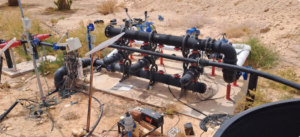Innovative Research: Unveiling the Science behind Automatic Water Irrigation Systems The automatic irrigation of water is revolutionizing the people’s approach to farming and gardening. This latest technology works via sensors and data, which present to the plants what would be just the right amount of water for better efficiency and crop yield. With the alarming growing rate of the world population, this type of innovation is so significant for the world’s agriculture.
Several techniques and technologies have surfaced to assist in automatic irrigation systems. These methods not only save water but also ensure plants get exactly what they need. From simple timers to complex sensor networks, the overall impact of advancements in this area is making a strong impact on how water is managed in agricultural settings.
Research and practical usage reflect that automatic irrigation leads to healthier crops and less expensive laboring costs. This blog post looks into the science, particularly those case studies that have given excellent results in agriculture.
Key Takeaways
- Automatic irrigation systems conserve water for farm operations.
- These technologies make use of sensors to monitor the needs of plants.
- Case studies that have succeeded show benefits to crop yield and labor savings.
Basic Concepts of Automatic Water Irrigation
Automatic water irrigation systems apply advanced technology in watering resources. The elements include the soil moisture, utilization of sensors for controlling this aspect, and applying measures to conserve the use of water.
Principles of Soil Moisture Regulation
Regulation of the soil moisture forms a vital principle of irrigation. It refers to the measurement of the water content within the soil to enable one know the when and how much to irrigate. Since each type of plant has a different view on the level of moisture it requires, this factor is essential to the irrigation schedule.
Factors in Soil Moisture:
The variety of soil utilized is sandy soil, here the water drains away fast, and in clay, where it remains inside without drainage, retaining the moisture.
- Crop water requirements: Different crops absorb water at different rates.
- Climate: Climatic conditions prevail that alter the moisture.
In case, the farmer regularly monitors the soil moisture levels, application of water takes place only when required, thereby avoiding wastage of water unnecessarily and allowing the healthy growth of plants at the correct time.
Development of Irrigation Sensors and Controllers
Modern sensors and controllers play an important role in automatic irrigation systems. Sensors measure soil moisture, weather conditions, and plant needs. It then sends that data to controllers to automate water supplies based on the schedules set.
Sensors used include:
1. Capacitive Sensors: Measures moisture levels by detecting the amount of change in capacitance.
2. Tensiometers: Measure soil water tension as an indicator of dryness.
Smart controllers utilize current conditions to make irrigation adjustments. Smart controllers utilize real-time weather data, and through algorithms, they dispense the right amount of water at the right time to the plants. This cuts down the consumption of water by huge margins.
Water Conservation Strategies
The main aspect of automatic irrigation is water conservation. Strategies are targeted toward decreasing the consumption of water while maintaining the health of plants.
Some effective ones include:
- Drip Irrigation: Water is directly delivered to roots for better reduction of evaporation.
- Rain Sensors: They control the watering during rainfall, thus conserving water unnecessarily disposed in rain.
- This would make farming more sustainable. It also aids in conserving the sources of water, and therefore, irrigation systems turn to be more environmentally friendly.
Case Studies and Applications
The auto water irrigation system has been implemented in many fields. Its advantages have been proved in agriculture, landscaping of urban cities, and environmental surveying. All these applications show that technology can improve efficiency in water consumption and plant health.
Agricultural Implementations
In agriculture, automatic irrigation systems changed everything. Farms using these systems reported a higher yield of crops and less water being wasted.
A farm in California utilized a smart irrigation system; with the help of software, it regulated the watering schedule to suit the weather forecast and the moisture level in the soil. To be this accurate, the system curbed 30% of its water usage and increased tomato production by 20%.
Farmers obtain the benefit in terms of lower operational expenses while having healthier crops. It is also possible to include sensors for the purpose of real-time monitoring of conditions.
Urban Landscaping Solutions
Automatic irrigation is also being implemented by the urban territories to conserve landscapes. In Phoenix, smart systems have been installed in parks as well as in public gardens.
These systems use weather data to irrigate plants only when needed. For example, Austin implemented an automated irrigation system that reduced public space water consumption by 40%.
Initiatives like these help not only to economize on water but also add beauty to urban landscapes.
Environmental Impact Assessment
Ecological studies evidence how automatic irrigation affects local ecosystems. Scientists have pointed out that such systems may lead to a more sustainable regime of water consumption.
A case study in Florida demonstrated how smart irrigation can maintain biodiversity in wetlands by regulating the water level and not creating any fluctuation in it.
By applying the results of automatic irrigation data, researchers found out how this technology affects environmental impacts by creating higher quality water and soil health. These findings are illustrating the potential for technology to work with humans and preserve their ecosystems instead of working against them.

Also Read :
